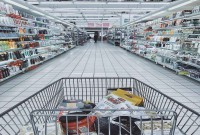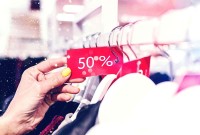- Home
- Business Processes
- Industry Knowledge
- Aerospace Industry
- Automotive Industry
- Banking Domain
- BFSI Industry
- Consumer/ FMCG Industry
- Chemicals Industry
- Engineering & Construction
- Energy Industry
- Education Domain
- Finance Domain
- Hospitality Domain
- Healthcare Industry
- Insurance Domain
- Retail Industry
- Travel and Tourism Domain
- Telecom Industry
- Leadership Skills
- eLearning
- Home
- Industry Knowledge
- Consumer/ FMCG Industry
- Challenges in Consumer Goods Industry
Challenges in Consumer Goods Industry
There are tens of thousands of general consumer products manufacturers in the United States. They compete to develop the best products at the most affordable price for the greatest number of consumers. Challenges for these organizations include meeting the changing demands of customers, maneuvering through a consolidating market, and executing strategies to grow profitably.
Some companies are part of traditional sectors (such as the clothing industry) that have existed for many years, while others, such as Apple and Dell, are part of the technology sector, which has emerged only in the last three decades. Manufacturers range from massive, multinational corporations to small firms with fewer than 50 employees.
In the past 10 years, the global market has witnessed a surge in demand as economies such as Brazil, Mexico, India, and China have opened up and begun rapid development. The consumer durables industry has always exhibited impressive growth despite strong competition and constant price cutting. There exists a very strong correlation between demand for durables and income. Leading players in this sector include Sony Corporation, Toshiba Corporation, Whirlpool Corporation, and Panasonic Corporation.
Developing countries such as India and China have largely been shielded from the backlash of the recession, as consumers continued to buy basic appliances. In fact, China has been ranked the second-biggest market in the world for consumer electronics. Despite the recession, their strong domestic economy and growing high-income population have buoyed demand leading to aggressive market growth.
The Internet has also changed the manner in which general consumer products are sold. Consumers can purchase almost any general consumer product they want and have it delivered to them without ever having to leave their homes.
The challenges faced by Consumer Durable Industry are listed below:
Changes in Delivery Model
Challenges for these organizations include meeting the changing demands of customers, maneuvering through a consolidating market, and executing strategies to grow profitably. Changes in delivery models have affected how CPG merchandise is being marketed. Coupons and loyalty card programs are designed with mobile end-users in mind and marketing initiatives are Omni-channel, providing the customer with a seamless shopping experience for frequently purchased products.
Changes in Consumer Expectations
A consumer's expectations are built on the basis of the information, which is gathered by word of mouth from friends, neighbors, and colleagues at work, shoppers, and the like. In addition, the various media where products may· be advertised, such as newspapers, magazines, hoardings, banners, neon signs, posters, radio, and T.V. commercials, all help to influence the consumer, in various ways, to change his/her expectations.
A common buying behavior seen among consumers is that of "Brand Preference". Consumers tend to purchase the same brand for many years if their experiences are good with respect to products meeting their expectations. If new products are launched under the same brand name, consumers expect it to have the same quality standards that they are used to, and often have no hesitation to try out the product. Studies have shown that brand image is built on the basis of a set of ideas and impressions that the consumer forms about a brand. He generally buys those brands which match his self-image.
Changes in Buying Behavior
The buying behavior of the consumer has shown considerable changes over the past few decades. Environmental changes that have taken place due to industrialization, urbanization, migration, occupational shifts, and modernization of lifestyles, are factors which have changed consumer expectations from products and services offered by the market.
Impact of Technology
Digital technologies are reshaping the consumer goods (CG) marketplace—and blurring the boundaries between stores and brands forever.
Other Challenges
Listed below are other challenges that are influencing the consumer goods sector:
- Local industry dynamics
- Supply-related issues pertaining to distribution and infrastructure
- Demand issues due to competition from imported goods
- Lack of well-developed distribution networks
- Penetrating fastest-growing rural areas
- Electricity availability
- Road infrastructure
- Systematic production
- Labor availability
- Increasing choice from both domestically produced and imported goods
- Superior technology
- A steady flow of capital
- Well-acknowledged brands
- Extensive distribution network
- Insight in local market conditions
Related Links
You May Also Like
-
Retail Industry: Current Challenges
Today consumers are choosing multichannel buying experiences and expect that to be a seamless experience. To attract customer loyalty, retailers need to provide an experience that stands out from others. Learn the challenges faced by the retail sector today. Multi-channel sale avenues, changing consumer behavior, technological advances, rising competition, rising frauds, and supply chain management are some of them that require immediate attention.
-
Consumers benefit from retailing as retailers perform marketing functions that make it possible for customers to have access to a broad variety of products and services. Retailing also helps to create a place, time, and possession utilities. A retailer's service also helps to enhance a product's image. Retailing has a tremendous impact on the economy. It involves high annual sales and employment. Learn the importance of the retail industry in this article.
-
Retail Industry: Key Performance Metrics
You cannot manage what you do not measure and cannot measure what you do not define. Learn the key performance metrics for the retail industry like Sales per square foot, Gross margins return on investment, Average transaction value, Customer retention, Conversion rate, Foot traffic, and digital traffic and Inventory turnover, etc. These metrics are used across the globe by key industry players to track and improve their performance.
-
Retail Industry – Drivers & Dynamics
To succeed in the retail sector, retailers must offer compelling value propositions and be responsive to market dynamics. The continued rise of e-commerce has altered the dynamics of the retail industry in such a way that has forced retailers to drastically reallocate their resources to multi-channel strategies. This article focuses on retail industry drivers and dynamics that provide the reader with a basic understanding of the factors that influence this trade. Understand the business drivers and dynamics of retail industry
-
The consumer goods sector is a category of stocks and companies that relate to items purchased by individuals and households rather than by manufacturers and industries. These companies make and sell products that are intended for direct use by the buyers for their own use and enjoyment. This sector includes companies involved with food production, packaged goods, clothing, beverages, automobiles, and electronics. Nestle, Procter & Gamble, and Pepsico are some of the world’s largest consumer goods companies in the world.
-
Retail Industry Sectors: Types of Retail
A marketplace is a location where goods and services are exchanged. The traditional market square is a city square where traders set up stalls and buyers browse the merchandise. Now retail goods are generally sold in a number of different establishments. Convenience Stores, specialty stores, department stores, supermarkets & hypermarkets, discount stores, multichannel stores are some models used by the retail industry to provide goods to end customers.
-
Markets are continuously changing and to understand the dynamics of any industry it is important to understand what is happening and how the industry market players see the future for the industry. In this article, we will discuss the recent trends witnessed by the retail sector. This document provides insights into major trends identified for the retail sector.
-
All of us are consumers, from cradle to grave, to be more precise, from the womb to grave or cremation. In a sense, the history of the consumer is the history of mankind. Consumers are the largest economic group in any country. They are the central point of all of our economic activities. But the very same consumers ate the most voiceless group also. The nature of consumer in terms of needs, consumption patterns, and problems has been changing and evolving along with the social and economic development in the course of history.
-
Competitive Landscape of Retail Industry
In an increasingly competitive landscape, retail industry players must compete in a number of ways. In this article, we will learn about the competitive landscape of the retail industry. Learn the key players in the retail industry and their business profile. Learn more about the top 5 industry players. Competition is rough, especially for the small business. Knowing how business stacks up to the competition is important to your business strategy.
-
Retail Industry: Strategies for overcoming challenges
To stay competitive in this ever-evolving landscape, it is imperative for retailers to deliver a seamless customer experience and provide the right services and products at the right time. Learn the strategies for overcoming challenges for the retail industry. Retailers must use technology and solutions to revive their businesses in the COVID-19 world. An omnichannel marketing strategy can help retailers reach a wider audience for their brands.
Explore Our Free Training Articles or
Sign Up to Start With Our eLearning Courses

About Us
Learning
© 2023 TechnoFunc, All Rights Reserved









